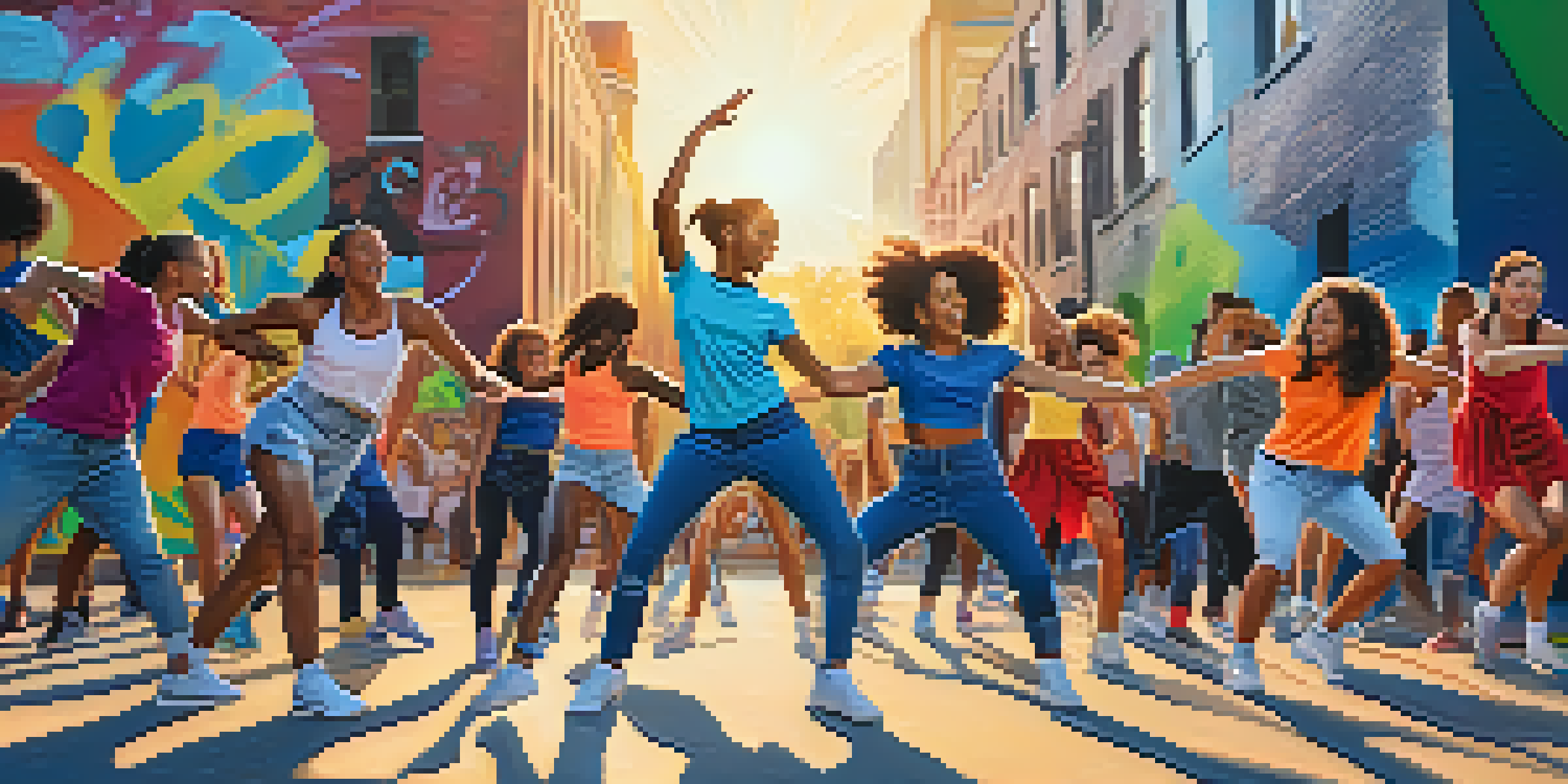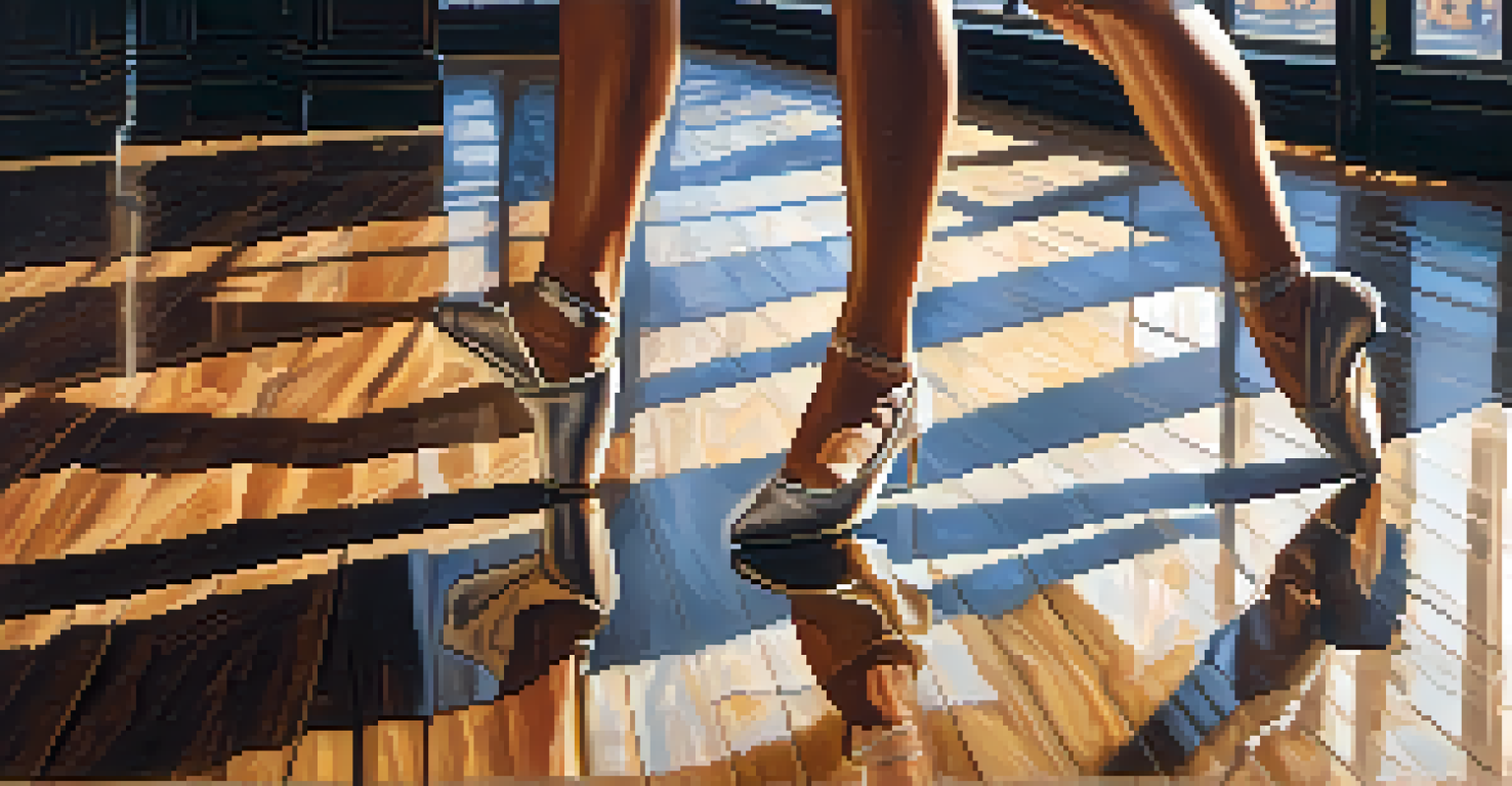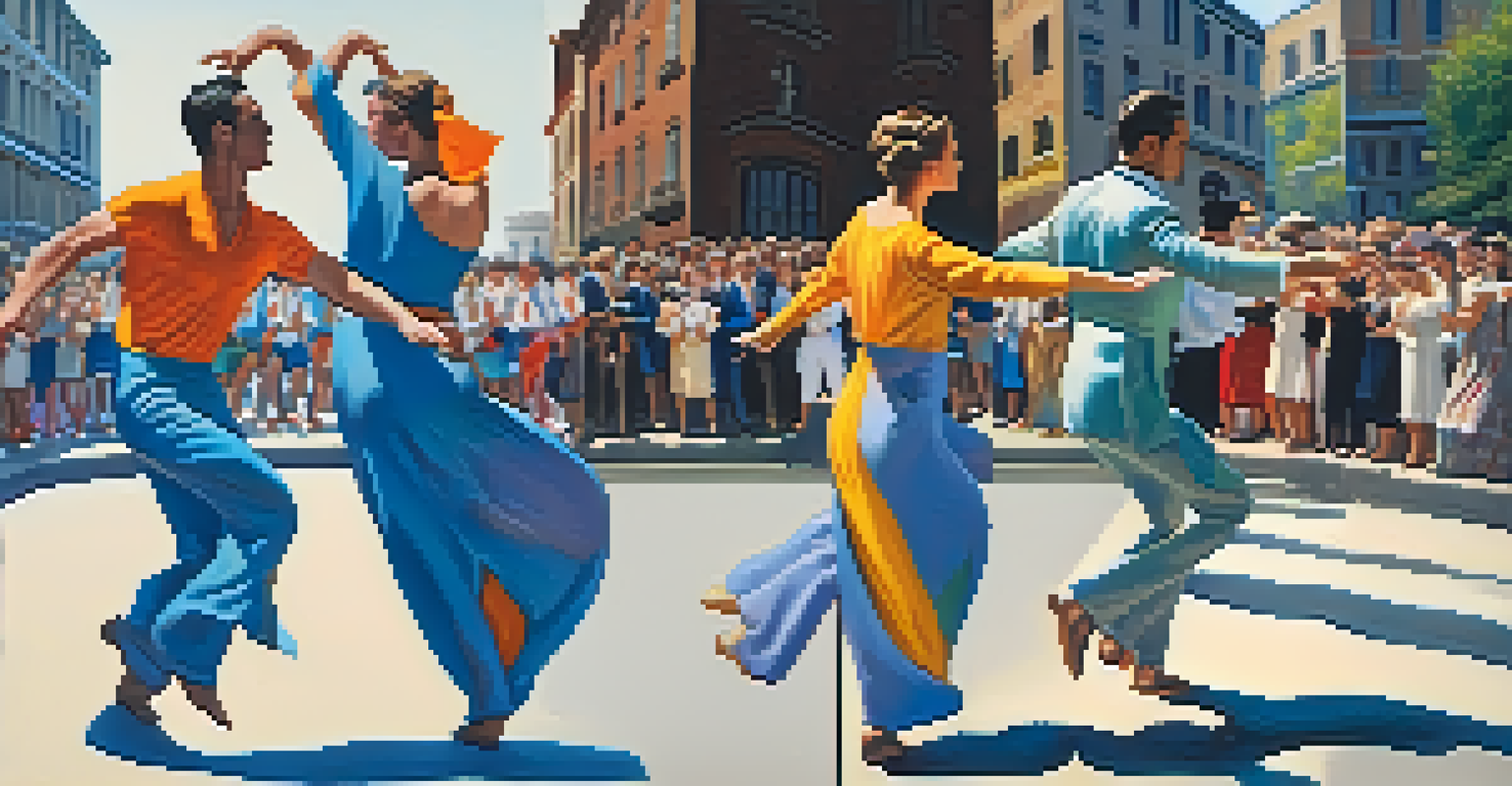How Social Media Influences Dance Trends in the Digital Age

The Rise of Viral Dance Challenges on Social Media
In the digital age, viral dance challenges have become a phenomenon, often kickstarted by platforms like TikTok and Instagram. These challenges invite users to replicate specific dance moves, making participation accessible and fun. For instance, the 'Savage Love' dance challenge took the world by storm, resulting in millions of users showcasing their interpretations. This democratization of dance not only brings people together but also fuels creativity, as each dancer puts their unique spin on the moves.
Dance is the hidden language of the soul.
The immediacy of social media means that trends can spread like wildfire, often in a matter of hours. One moment, a dance is performed by a popular influencer, and the next, it's on the feed of countless users worldwide. This rapid dissemination allows for a dynamic dance culture, where styles and moves evolve quickly, reflecting the tastes and preferences of diverse audiences. It's fascinating to see how a single video can inspire thousands of others to join in.
Moreover, these challenges often bridge gaps between generations, as younger dancers learn from older styles showcased by their parents or grandparents. This intergenerational exchange not only enriches the dance community but also ensures that classic moves remain relevant. It’s a beautiful cycle of inspiration that keeps the art of dance alive and thriving in our digital environment.
Influencers as Dance Trendsetters
Social media influencers play a pivotal role in shaping dance trends by showcasing their skills to millions of followers. These individuals often have the charisma and creativity to capture attention and inspire others to engage with dance. For example, dancers like Charli D'Amelio have leveraged their platforms to create and popularize new moves, turning them into global sensations. Their influence goes beyond mere popularity; they create a sense of community among dancers and fans alike.

The relationship between influencers and their followers is interactive, with trends often emerging from audience participation. Dancers might post tutorials or performances, encouraging viewers to replicate or adapt the moves. This engagement fosters a sense of belonging, as fans feel connected to the influencers and other dancers. It’s not just about watching dance; it’s about being part of a larger conversation and movement.
Viral Dance Challenges Unite Generations
Social media dance challenges bridge gaps between ages, allowing for a creative exchange of styles and moves.
Additionally, influencers can introduce various styles from around the world, broadening the dance landscape. This exposure helps to celebrate cultural diversity and encourages dancers to experiment with different techniques. In doing so, social media not only promotes individual expression but also highlights the rich tapestry of global dance traditions.
The Impact of Music on Dance Trends
Music is the heartbeat of dance, and social media has revolutionized how we access and share it. Platforms allow users to discover new tracks quickly, which often leads to the creation of fresh dance moves. For instance, the association between songs like 'Renegade' and their corresponding dances showcases how specific tracks can become synonymous with certain movements. This fusion of music and dance creates a vibrant atmosphere where creativity flourishes.
Dancing is like dreaming with your feet!
Moreover, trending songs can dictate the style and execution of dance moves, as dancers adapt their choreography to fit the beat and rhythm. The collaborative nature of social media encourages this experimentation, as dancers share their interpretations of a song’s vibe. This process not only propels a song to the top of the charts but also solidifies its place in the dance community. It’s a symbiotic relationship where both music and dance thrive together.
Additionally, the accessibility of music streaming services means that new genres are constantly emerging, influencing dance movements across different cultures. Dancers are no longer limited to mainstream hits; they can explore a wide array of sounds, from hip-hop to Latin beats. As a result, dance trends become more diverse and inclusive, reflecting the rich variety of musical influences available.
The Role of Hashtags in Dance Trends
Hashtags have become essential tools for categorizing and promoting dance trends on social media platforms. By using specific hashtags, dancers can connect with a broader audience, making it easier for others to discover their work. For example, hashtags like #DanceChallenge or #DancerOfTheDay help aggregate content, inviting users to explore various interpretations of a dance. This practice fosters community and encourages users to engage with one another’s posts.
Furthermore, hashtags can act as a catalyst for trends, igniting interest in a particular style or move. When a dance challenge gains traction, the corresponding hashtag often trends, leading to even more participation. This creates a ripple effect, where more users feel motivated to join in and contribute their versions. It’s a communal spirit that thrives on connection and creativity, thanks to the power of social media.
Influencers Shape Dance Trends
Social media influencers play a crucial role in popularizing dance trends, fostering community and encouraging audience participation.
The strategic use of hashtags can also help dancers gain visibility and recognition in an increasingly crowded digital space. They serve as a bridge between creators and potential fans, amplifying their reach. As dancers navigate this landscape, mastering the art of hashtags can make all the difference in promoting their work and establishing their presence online.
Globalization of Dance Through Social Media
In the digital age, social media has broken down geographical barriers, allowing dance styles from different cultures to coexist and flourish. Dancers can now share their cultural movements and traditions with a global audience, enriching the dance landscape. For instance, the popularity of K-pop has led to a surge in interest in Korean dance styles, inspiring dancers worldwide to learn and incorporate these techniques into their routines. This cultural exchange fosters a greater appreciation for diversity in dance.
Moreover, social media platforms serve as a stage for dancers from various backgrounds to showcase their unique styles. This visibility encourages collaboration and fusion, as artists experiment with blending elements from different traditions. It’s not uncommon to see hip-hop dancers incorporating African or Latin influences, creating innovative performances that resonate with a wide array of viewers. This blend of styles reflects the interconnectedness of our global society.
As dance becomes more globalized, it also raises awareness about cultural sensitivity. Dancers are increasingly encouraged to understand and respect the origins of the styles they are adopting. This mindfulness promotes authenticity and ensures that the rich history behind dance forms is honored, fostering an environment where creativity thrives while celebrating diverse heritages.
The Evolution of Dance Styles in the Digital Era
Dance styles are constantly evolving, influenced by the rapid pace of social media trends. Traditional forms are often reimagined and adapted to fit contemporary contexts, leading to unique hybrids that reflect current cultural themes. For instance, the emergence of styles like twerking showcases how social media can both celebrate and commercialize certain movements, sparking debates about cultural appropriation and authenticity. This evolution is a testament to the fluid nature of dance.
As dancers share their interpretations and remix classic moves, they are essentially participating in a living history of dance. Each generation adds its flair, leading to an exciting, ever-changing dance landscape. The digital age has also made it easier for dancers to document their journeys, sharing not just polished performances but also their growth and learning experiences. This transparency invites others to join the conversation, creating a supportive environment for aspiring dancers.
Globalization Enhances Dance Diversity
Social media breaks down cultural barriers, allowing diverse dance styles to flourish and encouraging collaboration among dancers worldwide.
Furthermore, the global accessibility of dance tutorials and online classes has democratized dance education. With platforms like YouTube and Instagram, anyone can learn new styles from the comfort of their home, encouraging more people to join the dance community. This availability fosters a culture of inclusivity, where everyone has the opportunity to explore their passion for dance, regardless of their background or experience level.
The Future of Dance Trends in a Digital World
As social media continues to evolve, so too will the dance trends that emerge from it. The potential for new technologies, such as virtual reality and augmented reality, could transform how dancers create and share their work. Imagine participating in a virtual dance class with instructors from all over the world or collaborating on choreography in a shared digital space. These innovations will push the boundaries of what we consider dance and how we engage with it.
Moreover, the rise of artificial intelligence could lead to dynamic, personalized dance experiences. AI could analyze a dancer's movements and suggest improvements or new styles to try, creating a tailored learning journey. This technology could make dance more accessible and engaging for individuals at all skill levels, fostering a deeper connection with the art form. It’s an exciting prospect that could reshape the future of dance education and performance.

Ultimately, the future of dance trends will depend on the creativity and resilience of its community members. As dancers navigate the digital landscape, they will continue to innovate and inspire, ensuring that dance remains a vibrant and essential form of expression. The connection between social media and dance will only grow stronger, reflecting the dynamic spirit of both art forms as they evolve together in the years to come.